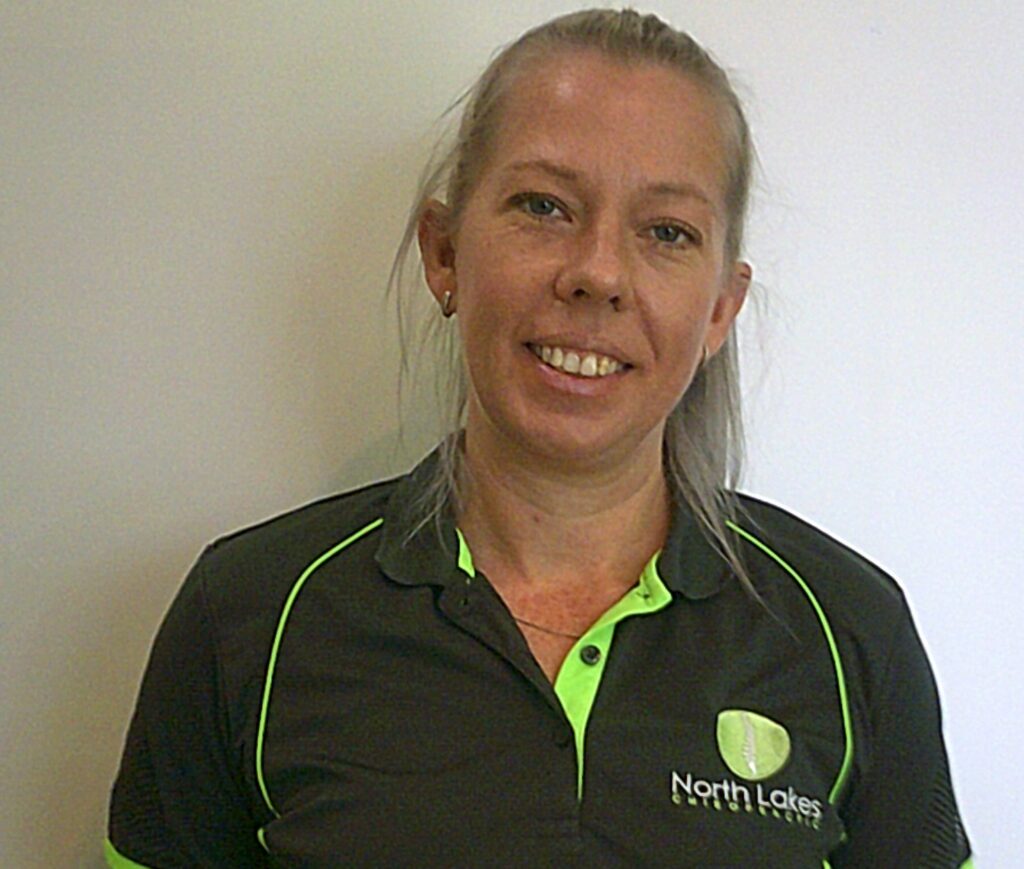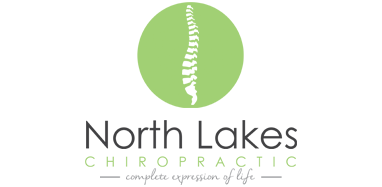Remedial Massage
WELCOME TO NORTH LAKES CHIROPRACTIC & REMEDIAL MASSAGE
.
Remedial Massage
Experiencing some type of body pain that doesn’t seem to go away? North Lakes Chiropractic proudly introduces our very own remedial massage team to answer your needs – be it general wellness, injuries, or anything muscle related.
Here at North Lakes Chiropractic & remedial Massage, we are passionate about the quality of service we provide and the outcomes we help achieve to manage the draining effects of stress, overuse, and repetitive use. Our team of qualified North Lakes massage therapists has had vast experiences in serving and working with people who experience acute and chronic discomfort, work-related injuries, sports-related injuries, and those needing soft tissue rehabilitation after trauma. We enjoy the challenges of working with difficult cases and have worked extensively to help people improve their mobility and regain their ease of movement.
Still unsure if you really need a remedial massage? Why live with the discomfort ? Contact us today and schedule an appointment with our experienced and qualified massage therapists who will be happy to help and be of service.
What to Look For in a Remedial Massage Therapist
Choosing the right remedial massage therapist is a crucial part of booking for remedial massage therapy. This is especially true if you haven’t tried remedial massage therapy. Below are a few basic rules to follow:
- Make certain that you choose a nationally accredited, qualified, and experienced remedial massage therapist.
- Verify if that remedial massage therapist is updated with the current research, latest techniques, and practices.
- A remedial massage therapist should carry out an thorough physical assessment before recommending and starting any treatment.
- Ensure that the place your remedial massage therapist is working on, as well as the stuff he/she is using, is clean.
All our Remedial team at North Lakes Chiropractic are:
- Registered practitioners.
- Medibank Preferred Remedial Massage Therapists in North Lakes.
- Qualified to deliver a variety of treatment techniques.
- Experienced in their field. The minimum experience held by a single remedial therapist at North Lakes Chiropractic is 5 years clinical experience.
- Trained to work with those presenting acute or chronic cases, work related injuries, overuse syndromes, sports related injuries.
Background to Remedial Massage:
Only the lucky few, out of millions of people, have made it through adulthood without experiencing any kind of muscle pain. Ranging from stress to injuries and traumas, only the luckiest can escape these common life horrors.
Fortunately for us, there is this method called remedial massage. It is the key to restoring your muscles at its prime and releasing you from the discomfort and pain you may be constantly feeling. You might have questions running on your mind by now. What is remedial massage? What benefits does it give? Is it that effective in healing injuries? Then go on reading to learn more about remedial massage therapy and why it may be the answer to your daily problems.
What is Remedial Massage?
Remedial massage involves the use of a variety of therapeutic techniques designed to locate and repair damaged areas in your body, such as muscles, tendons, ligaments, and connective tissues. Unlike most relaxation massages, remedial massages are tailored to each individual. Assessments and tests are conducted to target the areas causing your pain and postural dysfunction. Once the remedial therapist has found the specific cause of your pain or discomfort, the massage will then be concentrated around rehabilitating the muscles that are triggering the pain in your body. This allows the speeding up of your body’s healing processes, and it optimizes your health.
Types of Remedial Massage
A variety of techniques are performed by a remedial therapist over the course of the remedial massage treatment. These techniques may include:
- Deep Tissue Massage
This type of massage therapy focuses mainly on treating musculoskeletal issues, such as strains and sports injuries. At the start of a deep tissue massage, a lighter force is usually administered to work out and prepare the muscles. Sustained pressure applications are done using gentle, deep strokes that are aimed at the deeper layers of the muscles and connective tissues. This helps to split up the scar tissues that form after experiencing injures. Although some of the strokes may feel similar to those that are used in Swedish massage therapy, deep tissue massage is not a stronger form of a Swedish massage.
The application of this particular technique reduces muscle and tissue tension and may also promote quicker healing through the increase of blood flow and reduction of inflammation. Following a deep tissue massage, there is a possibility that you may feel some sort of stiffness or soreness, but this should subside within a day or so.
Deep tissue massages are best suited for those who engage in highly physical activities, such as running, triathlon, and other athletic undertakings, those who have an injury or are experiencing chronic pain.
- Trigger Point Therapy
Also known as Myofascial Trigger Point Therapy, the Trigger Point Therapy technique aims to improve blood circulation to the trigger zone, stretch the taut band (a group of tense muscle fibers), and release the surrounding connective tissues. Trigger point massages involve the application of direct pressure to trigger points, which can be slightly uncomfortable at first but can be adjusted by the therapist based on your pain tolerance. Each trigger point may be pressed, massaged, and stretched, and sometimes you may be required to actively take part in the stretching and moving process. This type of treatment uses a series of pressure and rest, and this process may also be supplemented by deep breathing.
Trigger Point Therapy helps improve flexibility and range of motion, alleviate pain, and improve posture. This also helps to ease tension felt in the muscles and is frequently used in combination with deep tissue massage to achieve ideal outcomes.
- Stretch Therapy
This type of remedial therapy is a broad method that involves table-based stretching, targeting the fascia (a network of layered connective tissues surrounding your muscles, nerves, bones, and organs) and joint capsules. Stretch therapy works by moving the joint together with the surrounding tissues to aid the fascia and your muscles in relaxation. In this technique, you will be assisted by a remedial therapist in stretching and targeting the areas needing attention.
When combined with other remedial massage techniques, assisted remedial stretching not can off assist to keep muscles lengthened. It is also known to help individuals achieve optimal flexibility, strength, and pain relief.
Those with chronic back pain, who regularly train, are active, and have experienced injury are the ones who should consider going for stretch therapy.
- Joint Mobilization
Joint mobilization is a manual therapy that involves the cautious use of skilled graded pressures to move the joint towards the desired orientation. Unlike stretch therapy, joint mobilization specifically targets the joint capsule itself. The gliding of the joints is commonly used to recover motion and stabilize joint functions. During this therapy, you will be placed in a comfortable position where you can relax and permit your joints to move easily. The remedial therapist will be using their hands to locate the joint needing mobilization and apply the required pressure in the correct direction. As the session progresses, the therapist may proceed in the usage of high-speed mobilizations.
Joint mobilization methods may be executed not only to reestablish movement but as well as impart a neurophysiologic effect that eases the pain felt and muscular contractions. It improves the mechanics of your joint to help with activities such as lifting your arms, bending your back, or even walking.
Anyone who experiences joint stiffness or pain can benefit from joint mobilization, but it is not generally used on patients with excessive joint flexibility or fused joints.
- Myofascial Release
Myofascial Release (MFR) is another kind of manual remedial massage technique which may be beneficial for the rehabilitation of skeletal muscle rigidity and pain. It is frequently applied as a treatment to myofascial pain syndrome, which is caused by sensitivity and stiffness in the myofascial tissues surrounding the muscles all over your body. During a myofascial release therapy, the therapist localizes those layers of soft tissues that seem tight and immobile instead of flexible and mobile under featherlike physical force. These areas, although they are not mostly close to what may feel like the origin of the pain felt, are believed to limit the mobility of joints and muscles, which results in pervasive muscle soreness.
The concentrated manual pressure used and assisted stretching involved in the myofascial release therapy relax the constrained motion of your muscles and joints, which indirectly results in the reduction of pain.
The people suffering from myofascial pain syndrome often enjoy the positive results from this kind of therapy. Those who experience prolonged headaches may also report benefits from myofascial release.
- Active Release Technique
Another remedial massage method is the Active Release Technique (ART). In this technique, the injuries in your muscles, nerves, fascia, ligaments, and tendons caused by either trauma, overuse, sports injuries, or postural strain are treated. The active release technique was developed in the mid-’80s to act as a treatment for muscle tension, muscle pain, and inflammation. Just like the other remedial massage techniques, the active release technique is preceded by an advanced and thorough examination before the treatment is done. This technique calls for over 500 specified moves that allow the remedial massage therapist to locate, evaluate, and treat the localized area of pain constantly affecting you. Abnormalities found in your soft tissues are then treated through the combination of accurately directed manual pressure along with specific movements that you will be asked to do. For this very reason, this technique is often termed as “movement-based”.
The active release technique involves manipulating and moving your injured or damaged muscles and surrounding tissues. It is aimed to strengthen weakened muscles, balance movement, increase mobility and range of motion, and relieve strained nerves. The tightness of scar tissues in your body is also treated under this technique—all of these results to improved tension, texture, function, and movement of the soft tissues.
- Pregnancy Massage
Pregnancy massage is becoming more and more popular during recent years. This form of remedial massage technique is actually based upon the principles of Swedish massage techniques. The degree of care applied to manual pressure is also different from other techniques. The mum-to-be is often advised to do the side-lying position as it proves to be the most comfortable and convenient position for her and the therapist.
This technique, when done effectively may help relieve stress, discomfort, and reduces anxiety among pregnant women.
Conditions Treated Using Remedial Massage
Having a massage is a great way to unwind, distress, and indulge in relaxation. Nonetheless, massage gradually proves to be an effective way to treat conditions. In fact, a wide variety of medical conditions can be treated through the use of remedial massage. Listed below are the various conditions, among others, which massage therapy helps rehabilitate, be it directly or in combination with other principal treatments.
- Physical pain
- Muscle tension
- Muscular spasms
- Muscle pain and strain
- Back pain
- Neck pain
- Shoulder pain
- Tennis Elbow
- Carpal Tunnel
- Pain in the elbows & knees
- Rotator Cuff Syndrome
- Jaw pain
- Contractures
- Bursitis
- Myofascial Pain Syndrome
- DOMS (Delayed Onset Muscle Soreness)
- Sciatica
- Frozen Shoulder
- Sports-related injuries
- Stress
- Headaches and Migraines
Although remedial massage may not be as relaxing as a relaxation massage such as Swedish massage therapy, it is still very effective at calming your mind and body. This is especially true as remedial massage therapies can take away your musculoskeletal pain, which in turn has a direct and observable effect on your mental and emotional state.
7 Things You Should Do to Have a Better Remedial Massage
You might just be very excited to book a remedial massage therapy as soon as possible. I mean, why not? Who doesn’t want to finally break free from the stressors of everyday life or the constant pain you are feeling in your back? Before booking such a visit, you may want to know a few things to help you get the most out of your remedial massage.
- Drink Pleanty of Water Before and After an Appointment
Make certain that you are well-hydrated before your massage, and it is especially important to hydrate after the massage. A massage is dehydrating in nature; thus, it is best to drink lots and lots of water because it helps flush out the toxins and accumulated wastes released from your body.
- Remember to Breathe
It can be tempting to tense up a little bit and hold your breath, especially when your therapist is working on a tight knot or when you feel anxious – it will be counterproductive. Holding your breath tightens your muscles even more, and your therapist may find it hard to loosen them up. So remember to relax and breathe normally as the massage is being done.
- A Warm Shower Will Help
A warm shower just before your appointment is the easiest way to help you relax. Both your mind and muscle will love you for it, and it will definitely allow you to be less tense during the session.
- Steer Clear of Alcohol
Alcohol is a real no-no. When you get a massage, your body moves the toxins it contains, therefore any ill effects caused by alcohol might only be amplified. You should stay away from drinking alcohol as much as possible. You don’t want to sabotage your own body’s restoration, right?
- Avoid Eating Right Before Your Massage
Usually, eating a full meal right before your appointment isn’t encouraged because a massage stimulates your digestion. Of course, you don’t have to starve yourself before the massage, as it may cause more harm to your body than benefit. Eat a light meal right before your appointment, or a meal a few hours prior so that you won’t feel overly hungry nor uncomfortably full.
- Wear Comfy Clothing
When going to an appointment for a remedial massage, choose to sport or, at the very least, carry with you comfortable clothing. Wearing comfortable clothing helps in the relaxation process, and undressing would be a lot more manageable for you too. You might also feel some soreness, or you may be really relaxed after a massage, and you would surely appreciate not having to exert so much effort in putting on restrictive clothing.
- Communicate
Your massage therapist isn’t a mind reader just as so many medical professionals aren’t. Your therapist is trying to help you get well, so you might as well communicate openly about the things bothering you. In case you have a particular problem in a certain area or just intend to relax – let your therapist know. If you have any allergies to certain products – communicate. If you feel discomfort during the process of the therapy – tell your therapist straight away. They can adjust to accommodate your needs and preferences, so don’t worry. Holding back will absolutely do you no good.
What to Expect During Your Remedial Massage Therapy
You are now prepared for a remedial massage therapy, and you might be wondering what will happen during the process. So, here’s a list of things to expect during your massage:
You might fall asleep
Because remedial massage therapy can be so relaxing, you might find yourself dozing off a little. This isn’t something you should be worrying about. Believe it or not, it is considered a compliment for massage therapists to hear you snoring during a massage session. It only flatters them to know that they are doing great in helping you relax and experience relief.
You might feel sore
Massages can make you feel sore right after, just as exercises do. Your muscles are being worked pretty hard, so it’s natural. Soreness usually goes away a day or two, but it might be recommended by your therapist that you treat the sore spot with ice to lessen the soreness. Light stretching is a good option, too.
You are likely to want to come back for more
It is well documented, remedial massage can help to optimise your muscle performance. A massage can also helps you release ‘feel-good’ hormones called endorphins, leaving you feeling relaxed. With regularly scheduled remedial massage sessions, you can accumulate the healing qualities and benefits you receive. With the relaxing and healing effects of a remedial massage, you would certainly want to come back for more.
Call: (07) 3482 4461
For appointment bookings please call our office or book online via our website.



